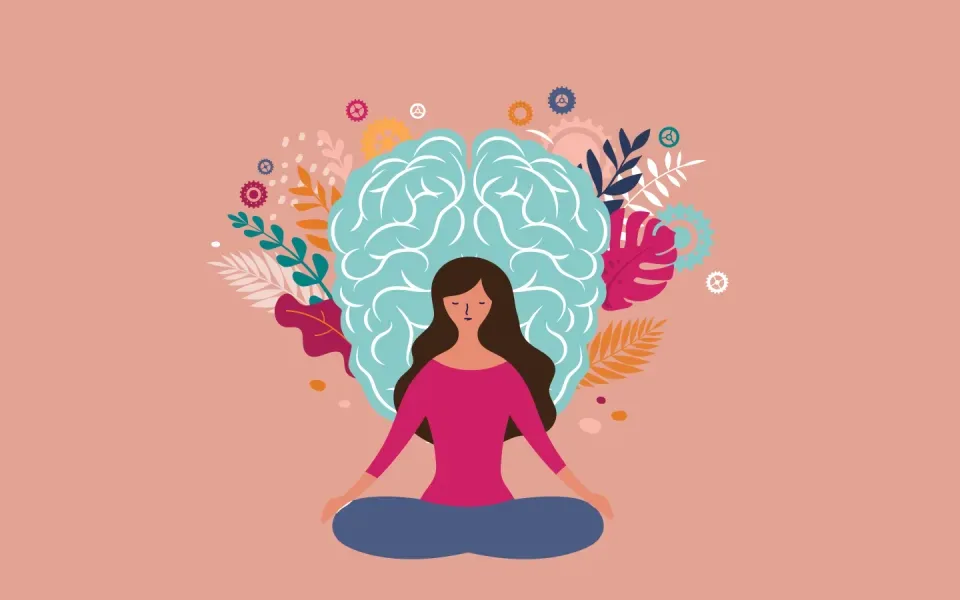Anger is a natural human emotion. Everyone experiences it, from mild irritation to intense rage. While anger itself isn’t inherently harmful, how we respond to it can significantly impact our mental, emotional, and physical well-being. Many of us react impulsively, saying or doing things we later regret.
Mindfulness offers a path to awareness and recovery after anger. Rather than suppressing or ignoring the emotion, mindfulness encourages us to observe it, understand its triggers, and respond consciously. By cultivating this awareness, we can transform anger from a destructive force into an opportunity for growth, self-understanding, and improved relationships.
This article explores:
- The psychology and physiology of anger
- How mindfulness works to regulate emotional responses
- Practical techniques for recovery after anger
- Steps to integrate mindfulness into daily life for emotional resilience
- Real-life examples and exercises
Anger is a powerful, consuming emotion. It can flare up in an instant, leaving a trail of hurt feelings, regrettable words, and a lingering sense of agitation long after the moment has passed. While we often focus on managing anger in the moment, an equally important and often overlooked part of the process is what happens after the storm. How do we recover? How do we find our way back to a state of calm?
This is where awareness after anger comes in. It’s the practice of bringing mindfulness to the aftermath of an angry outburst or a tense situation. Instead of just trying to “move on,” we can use this time to understand the anger, tend to its effects, and learn to heal, preventing future flare-ups.
The Lingering Aftershock: Why Recovery is Crucial
When anger takes hold, our bodies are flooded with stress hormones like adrenaline and cortisol. Our heart rate increases, our muscles tense, and our rational mind takes a backseat. Even after the immediate trigger is gone, these physiological and emotional effects can linger for hours, leaving us feeling:
- Physically Drained: Anger is exhausting. The body needs time to return to a baseline state of calm.
- Mentally Foggy: A mind that has been hijacked by anger struggles to focus, make sound decisions, and engage in creative thought.
- Emotionally Vulnerable: Feelings of guilt, shame, or lingering irritation can easily lead to a cycle of rumination, replaying the event over and over.
Without a conscious effort to recover, we remain in a state of subtle turmoil, making us more susceptible to the next angry trigger.
Understanding Anger: The Psychology and Physiology
The Psychological Aspect
Anger often arises when we feel:
- Threatened or disrespected
- Frustrated or powerless
- Hurt, judged, or misunderstood
Psychologists note that anger frequently masks deeper emotions such as fear, sadness, or disappointment. Recognizing these underlying feelings is crucial for mindful recovery.
The Physiological Aspect
Anger triggers the fight-or-flight response in the body:
- Increased heart rate
- Elevated blood pressure
- Tension in muscles
- Release of stress hormones like cortisol and adrenaline
These physical responses prepare the body for immediate action but can become harmful if anger is prolonged or expressed destructively.
The Ripple Effect of Unmanaged Anger
Unchecked anger can lead to:
- Strained relationships
- Reduced mental clarity
- Poor decision-making
- Health problems such as headaches, digestive issues, or hypertension
Mindfulness provides tools to pause, observe, and recover, preventing these negative consequences.
The Role of Mindfulness in Anger Recovery
What is Mindfulness?
Mindfulness is the practice of paying attention to the present moment, non-judgmentally. It involves observing thoughts, emotions, and sensations with curiosity rather than reaction.
How Mindfulness Helps After Anger
- Creates Awareness
- Observe the emotion without suppressing or amplifying it.
- Recognize physical sensations, thoughts, and impulses.
- Reduces Reactivity
- Interrupts automatic responses such as yelling or blaming.
- Allows conscious choice in how to respond or act.
- Promotes Emotional Regulation
- Enhances the brain’s prefrontal cortex function, improving decision-making.
- Calms the amygdala, reducing intensity of emotional responses.
- Facilitates Reflection and Insight
- Encourages understanding of triggers and patterns.
- Provides opportunities for personal growth and self-compassion.
Practical Techniques for Post-Anger Mindfulness

1. Pause and Breathe
- Take slow, deep breaths to calm physiological arousal.
- Focus on inhalation and exhalation.
- Even 30–60 seconds of conscious breathing can reduce the intensity of anger.
Tip: Try counting your breaths, inhaling for 4 counts, holding for 2, and exhaling for 6.
2. Body Scan Awareness
- Pay attention to areas of tension in the body.
- Notice tight shoulders, clenched jaw, or racing heartbeat.
- Consciously release tension with each exhale.
Benefit: Connects mind and body, helping diffuse anger physically and mentally.
3. Labeling the Emotion
- Identify and name the emotion: “I feel anger and frustration right now.”
- Recognize any secondary emotions like hurt or fear.
Effect: Labeling creates distance from the emotion, reducing identification with it and preventing impulsive reactions.
4. Observing Thoughts Without Judgment
- Notice any judgments, blame, or stories your mind creates.
- Example: “They are so unfair” → observe as a thought, not a fact.
- Return focus to sensations, breath, or the present moment.
5. Reflective Journaling
- Write down what triggered your anger, how it felt, and any physical sensations.
- Reflect on patterns and possible alternative responses.
- End with a note of self-compassion or insight.
Benefit: Enhances self-awareness and helps prevent recurring patterns.
6. Compassionate Visualization
- Visualize the person or situation with empathy and understanding.
- Imagine sending calm, compassionate energy to yourself and others.
- Reduces lingering resentment and promotes reconciliation.
7. Mindful Movement
- Engage in gentle exercise like walking, yoga, or stretching.
- Pay attention to movement, breath, and bodily sensations.
- Helps release built-up tension from anger.
Integrating Mindfulness into Daily Life
Morning Mindfulness Ritual
- Start the day with 5–10 minutes of breath awareness or meditation.
- Set an intention to respond with presence rather than reactivity.
Mindful Breaks
- During work or daily tasks, pause briefly to check in with your emotional state.
- Notice any rising tension or irritation before it escalates.
Evening Reflection
- Reflect on moments of anger during the day.
- Practice labeling emotions, journaling, and releasing tension.
Ongoing Practices
- Regular meditation strengthens the brain’s ability to regulate emotions.
- Mindful breathing exercises throughout the day create habitual calm.
Real-Life Examples
Example 1: Workplace Conflict
Emma became frustrated when a colleague missed a deadline. Instead of reacting impulsively, she paused, focused on her breath, and observed her feelings. She then approached the colleague calmly, expressing her concerns constructively. This preserved the relationship and led to a productive solution.
Example 2: Family Argument
During a disagreement with her teenager, Sarah noticed rising anger. She took three mindful breaths, recognized the underlying hurt and fear, and responded with empathy rather than defensiveness. The conversation ended with mutual understanding rather than conflict escalation.
Example 3: Driving Rage
Tom often felt road rage while commuting. Practicing mindful awareness, he noticed tension in his shoulders and clenching fists. He labeled the emotion, took deep breaths, and reminded himself he could not control others’ actions. He arrived at work calmer, with reduced stress.
Long-Term Benefits of Post-Anger Mindfulness
- Improved Emotional Regulation: Reduced impulsive reactions and better control over emotional responses.
- Health Benefits: Lower stress hormone levels, improved cardiovascular health, and reduced physical tension.
- Enhanced Relationships: More empathetic and constructive interactions with others.
- Increased Self-Awareness: Clearer understanding of triggers, patterns, and underlying emotions.
- Personal Growth: Anger becomes an opportunity for learning rather than a source of harm.
Exercises for Continued Practice
Daily Mindfulness Practice
- Morning meditation: 5–10 minutes
- Breath awareness during stressful tasks
- Evening reflection on emotional responses
Trigger Awareness
- Keep a log of situations that provoke anger.
- Reflect on physical sensations, thoughts, and automatic reactions.
Compassion Practice
- Regularly practice sending kind thoughts to yourself and others.
- Reduce rumination and lingering resentment.
Integration With Therapy or Coaching
- Mindfulness can complement professional support for anger management.
- Structured sessions combined with daily practices accelerate emotional growth.
Conclusion: Transforming Anger Through Awareness
Anger is not the enemy—it is a signal, a call for awareness and reflection. Mindfulness teaches us to pause, observe, and respond, transforming anger from a reactive force into an opportunity for growth, connection, and clarity.
By practicing breath awareness, body scans, journaling, and compassionate reflection, we can:
- Recover faster from anger episodes
- Reduce the negative impact on health and relationships
- Cultivate emotional resilience and self-understanding
The next time anger arises, pause. Notice. Breathe. Reflect. Respond with awareness. Over time, this mindful approach transforms how you experience anger, leading to calmer, clearer, and more fulfilling interactions in every area of life.
We’d love to stay connected.
Tap to join our WhatsApp channel and receive thoughtful updates, friendly advice, and helpful reminders direct to your phone.
